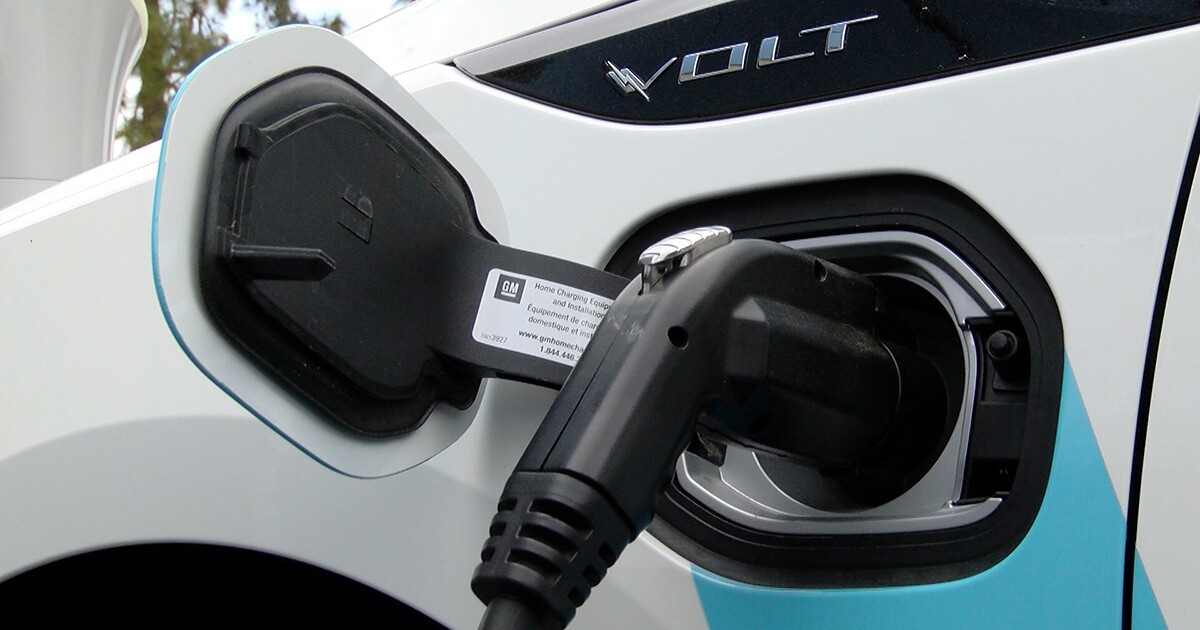
California regulators have put the state on a course to add millions of electric vehicles (EVs) to local roads in the next decade, but some are questioning whether there is enough electricity to fuel them.
So far, 1,214,516 EVs have been sold in California, which is just shy of half of all EVs sold in the country, according to the nonprofit EV tracker Veloz. The state boasts close to half of all electric vehicle sales in the country.
And millions more EVs are on the way, thanks in part to a state ban on the sale of new cars with internal combustion engines, which takes effect in 2035.
But the new cars hitting the road in the next decade will need lots of juice, and the state’s relationship with the power grid is fraught with uncertainty — a fact highlighted by a late-summer heat wave during which California Gov. Gavin Newsom pleaded with residents to conserve.
On one day deep into the hot spell, California sent more than 27 million text messages asking for conservation late in the afternoon, through easing back on air conditioning and refraining from charging electric vehicles.
The requests from power grid officials prompted social media to roast the governor because the energy emergency happened a week after state officials took a dramatic position to ban the sale of vehicles with internal combustion engines in a dozen years.
California is moving to shrink its carbon footprint as a way to avoid more intense wildfires and drought, which are hallmarks of climate change.
“We need to eliminate emissions from the California economy,” said David Victor, professor of industrial innovation at the UC San Diego School of Global Policy and Strategy. “The biggest source of emissions right now, 41% of emissions, come from transportation. So, you’ve got to tackle that. The leading solution, not the only solution, the leading solution is electrifying. Especially electrifying cars,” Victor said.
Victor points out that there is time for the state to absorb the demand driven by EVs.
Ironically, EVs are arriving in the midst of an energy transition. Solar and wind are rising in prominence as reliance on fossil fuels wanes.
And the grid will have to be built up to account for the extra anticipated draw from EV’s.
“Pretty much every study shows there’s going to be a significant increase in the demand for electricity in California as a result of this,” Victor said. “I think many of the studies suggest that light-duty vehicles alone, cars, they are going to be responsible for a one-quarter increase in the demand for electricity between now and 2045.”
And, while millions of new EV’s will be feeding off the electric grid in coming years, the change won’t be immediate..
San Diego Gas and Electric representatives said the company could handle the demand for more power as higher numbers of EVs hit the road.
“The short answer to that is yes,” said Jeni Reynolds, the SDG&E director of clean transportation. “The long answer is much more complicated. And so, when you start getting into the specifics of when that load’s going to hit, how it’s going to hit, what new technology and what type of battery storage we have to help, you know, that’s a much more complex answer.”
Reynolds is confident that the utility can build the required power lines and transformers — that is what utilities do — but the company also needs to build understanding among its EV customers.
Right now, energy usage peaks between 4 and 9 p.m. The utility wants EV charging to happen during the day — or overnight.
“If we can get a lot of the charging in those times, then the buildout isn’t going to be as much,” Reynolds said. “So we have capacity that’s there. It’s about how to incentivize customers to use that capacity. Then, it’s also the new technology, like vehicle-to-grid, and how we as consumers are going to own our energy transition.”
Vehicle-to-grid is an emerging technology being tested in the Cajon Valley Union School District.
Electric buses can feed power in their batteries back to the grid for a premium price when electricity is in short supply.
EVs could become a huge reservoir of stored energy, but that technology might not be ready yet.
“So, the devil is really in the details,” said Jan Kliessl, a professor at UC San Diego’s Jacobs School of Engineering. “Details of the inverter technology not becoming too expensive to make it not worth the customer’s while. And the battery manufacturer, in this case the vehicle manufacturer, agreeing that this is something they would cover under the warranty.”
There are short-term paths to manage the power demand from millions of household devices, and EVs, while keeping the grid reliable.
“Computer systems can help us to manage things better like scheduling,” Kliessl said. “But, still, you don’t make the load go away. You just shift it.”
Shifting the load, shifting people’s habits and shifting the power supply to renewables while adding capacity to the grid are keys to making sure that the flood of EVs doesn’t swamp a power grid that is already feeling its limitations.
"electric" - Google News
September 19, 2022 at 08:01PM
https://ift.tt/npG8AgW
California grid can handle electric vehicle load with updated infrastructure and customer discipline - KPBS
"electric" - Google News
https://ift.tt/xHAuBTE
https://ift.tt/GZVX8CS
Bagikan Berita Ini














0 Response to "California grid can handle electric vehicle load with updated infrastructure and customer discipline - KPBS"
Post a Comment